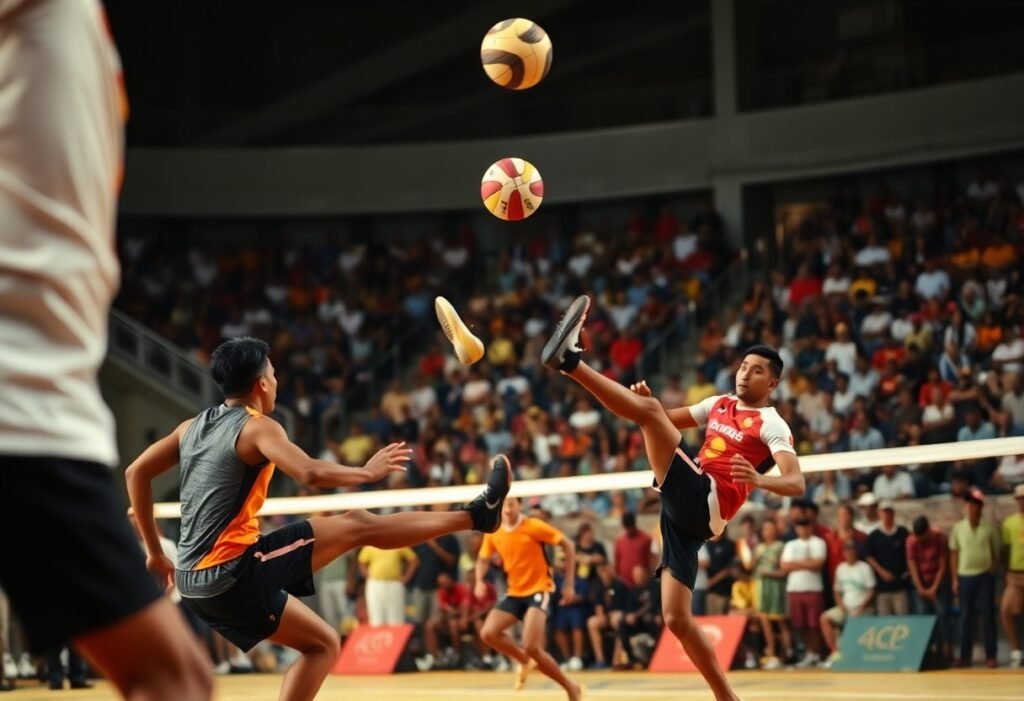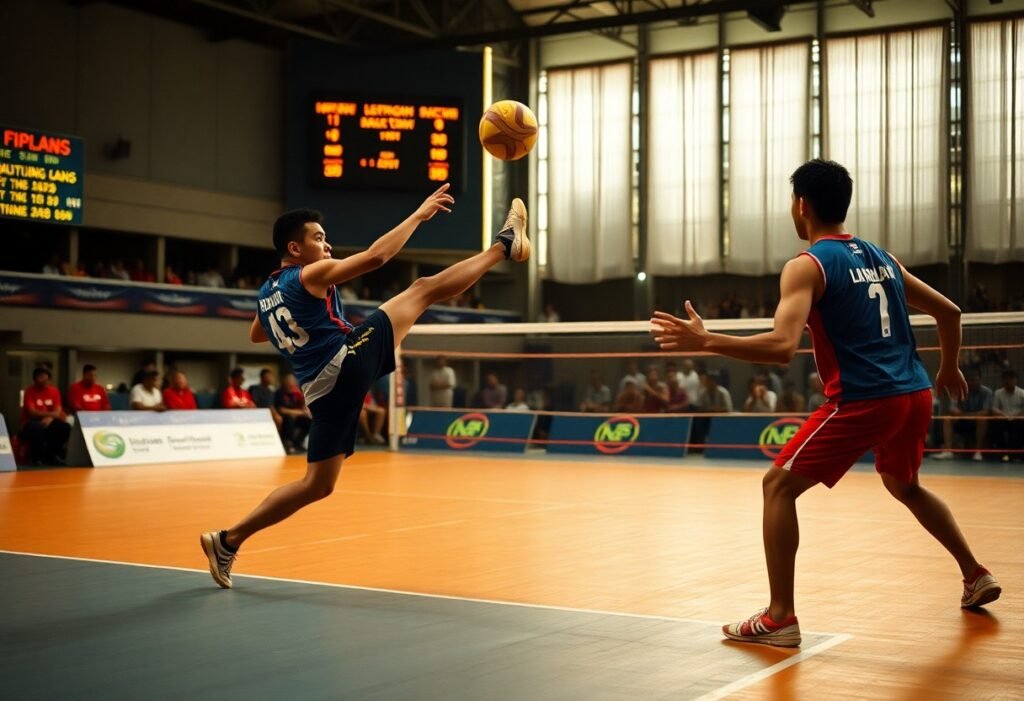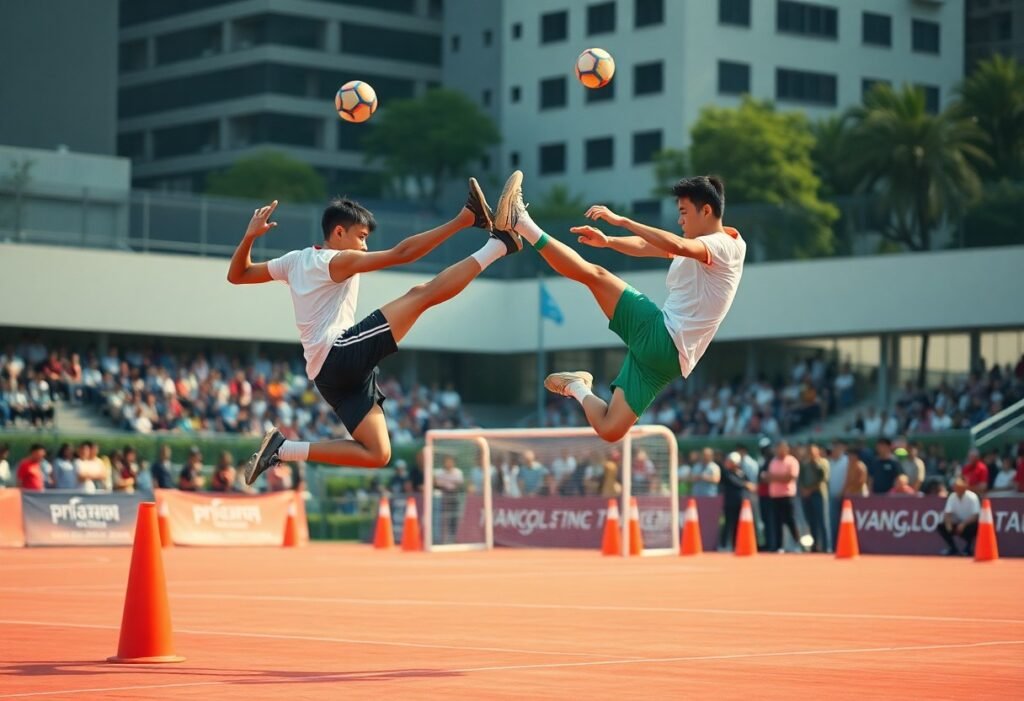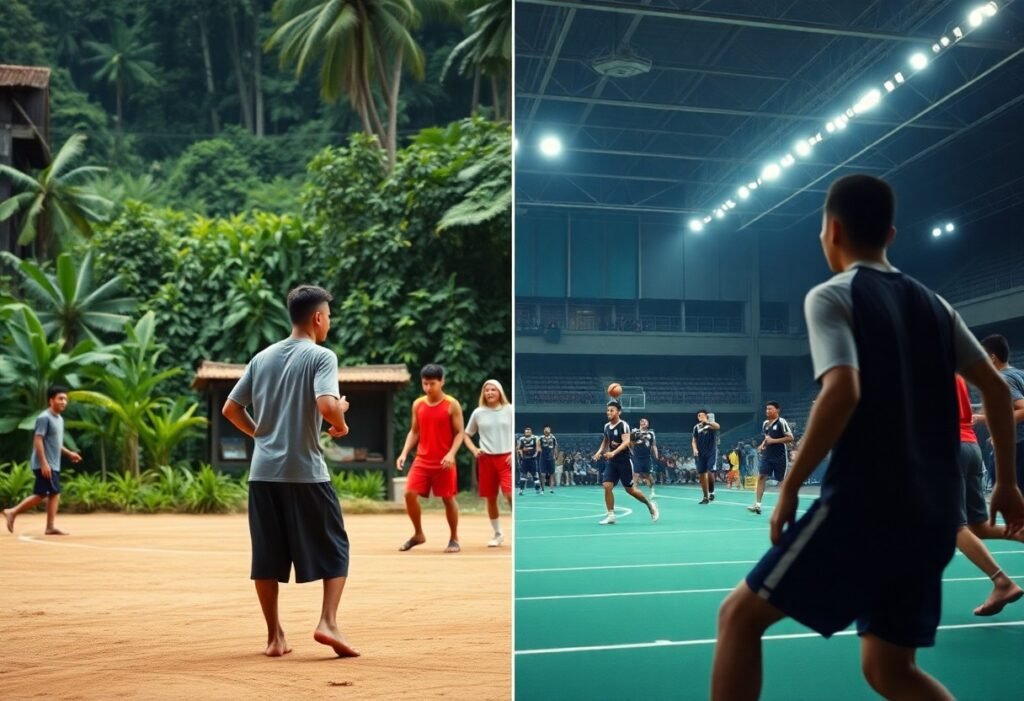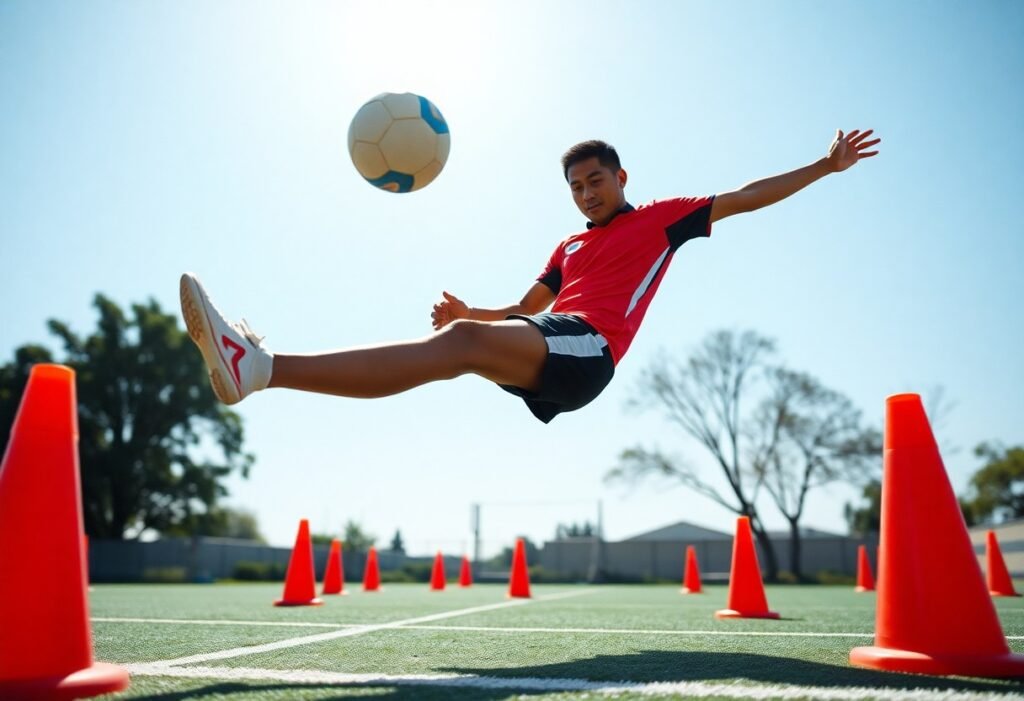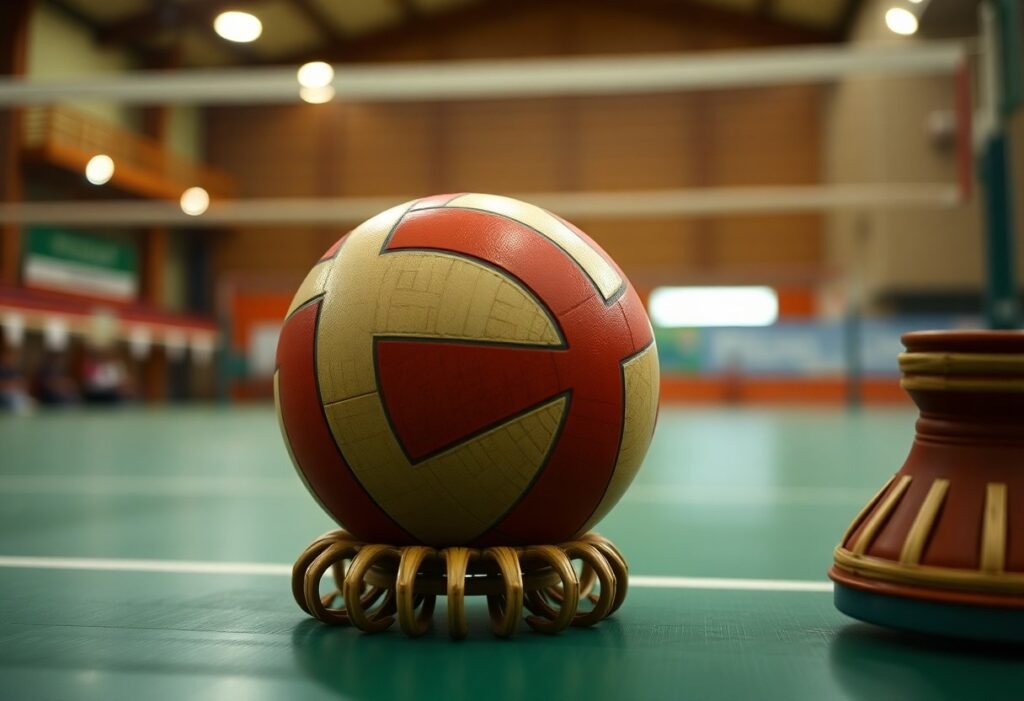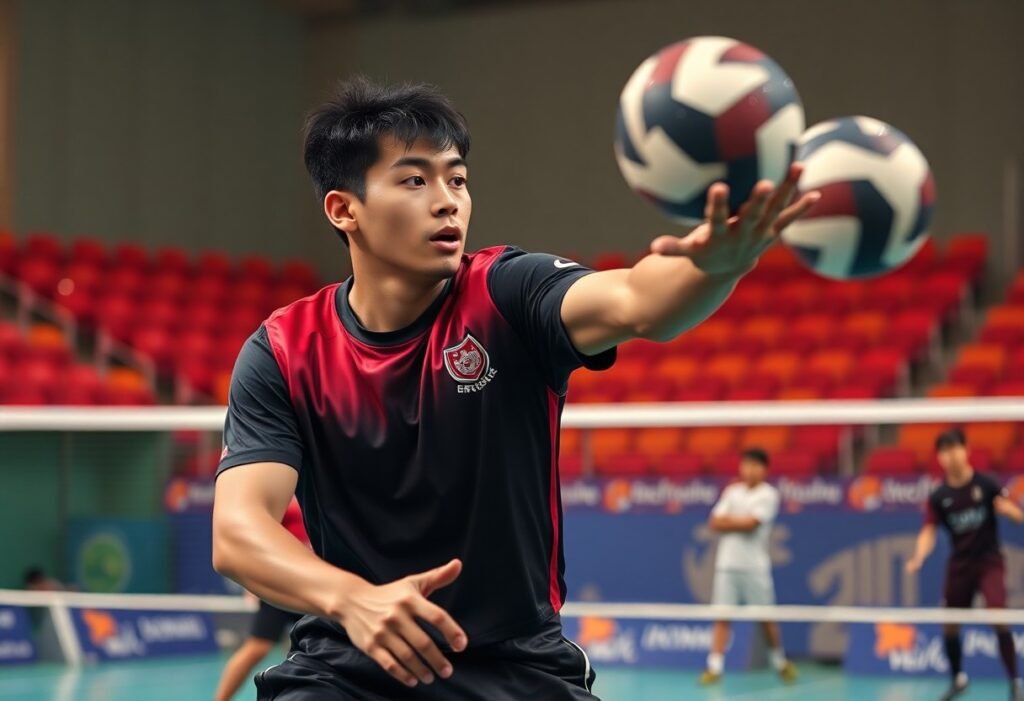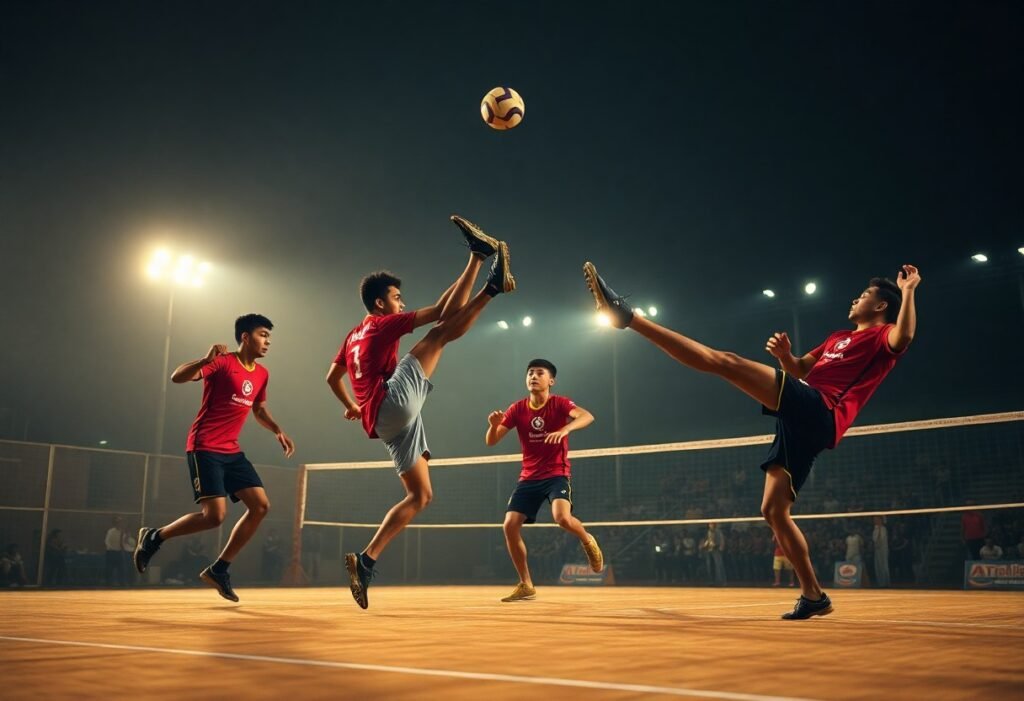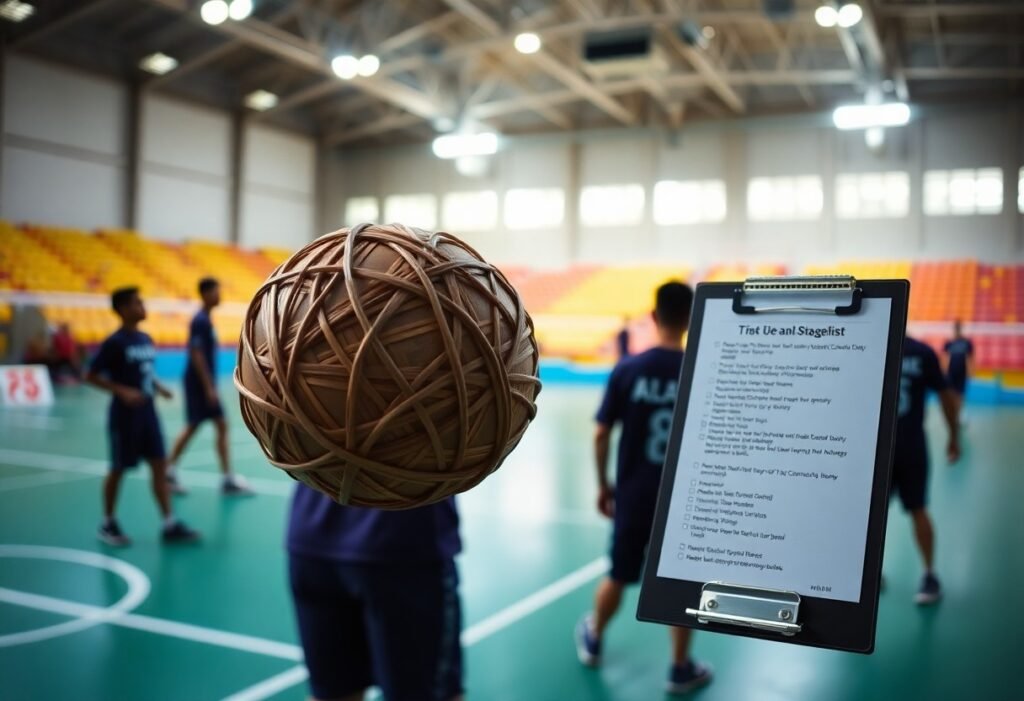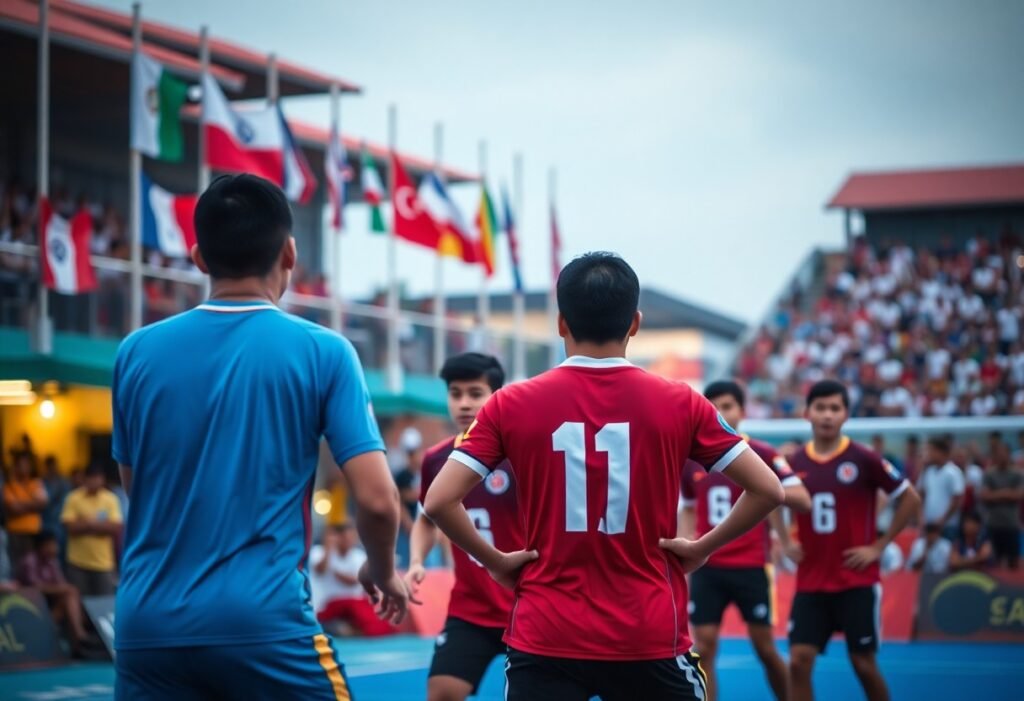It’s time you discover Sepak Takraw, a mesmerizing sport that combines elements of soccer and volleyball, showcasing athleticism and agility like no other. Originating in Southeast Asia, this fast-paced game emphasizes teamwork and precision, captivating audiences with its acrobatic moves and strategic plays. You might be surprised to learn that its players leap to incredible heights, exhibiting remarkable physical prowess. As the world becomes increasingly connected, integrating Sepak Takraw into the Olympic Games would not only highlight its cultural significance but also diversify the sporting landscape, engaging millions of fans globally.
Key Takeaways:
- Sepak Takraw showcases unique athleticism and skill, combining elements of soccer and volleyball, which can captivate a global audience.
- The sport promotes cultural exchange and unity, highlighting the rich traditions of Southeast Asia while gaining recognition worldwide.
- Incorporating Sepak Takraw into the Olympics can foster greater interest and participation in the sport, enhancing its development and legacy on an international scale.
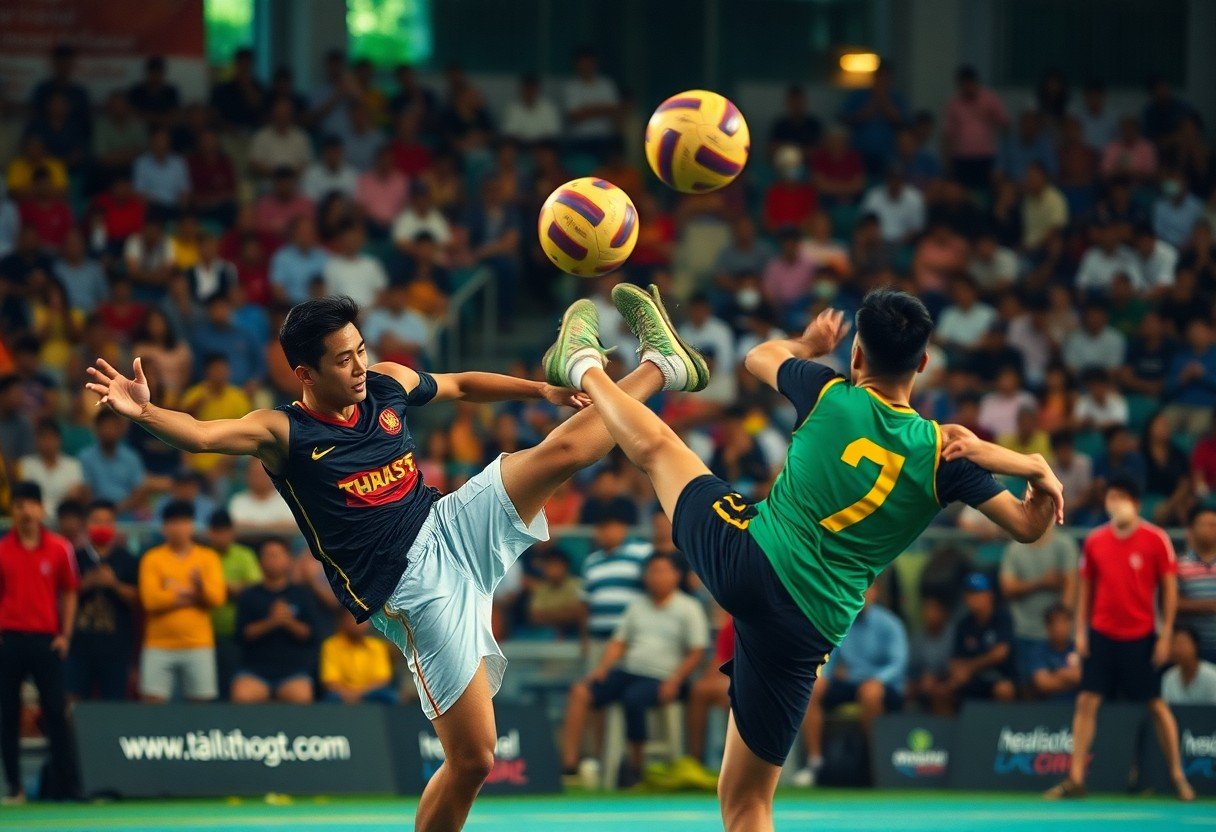
The Origins of Sepak Takraw
For centuries, Sepak Takraw has captivated audiences across Southeast Asia with its unique blend of agility and artistry. Understanding the origins of this remarkable sport allows you to appreciate not only its gameplay but also its profound cultural significance.
Historical Background
Historical evidence suggests that Sepak Takraw emerged in the 15th century in the Malay Peninsula, originally serving as a recreational activity among local communities. The game evolved from various traditional ball games, with roots in the ancient martial arts of Southeast Asia.
Traditional Roots and Cultural Significance
Cultural expressions through Sepak Takraw are deeply entrenched in the lifestyles of many Southeast Asian nations, embodying values like teamwork and physical prowess. You will find that this sport transcends mere entertainment, fostering community bonds and pride.
And as you probe deeper, you may discover that Sepak Takraw often features in local festivals and celebrations, reinforcing its importance in social gatherings. The skillful moves displayed by players, who often perform acrobatic kicks and flips, not only entertain but also serve as a testament to the rich heritage and communal identity of the regions where it flourishes.
Evolution into a Competitive Sport
Cultural shifts over the decades have led to the transformation of Sepak Takraw from a pastime to a fiercely contested sport. With organized competitions emerging in the late 20th century, you can observe a growing international interest fueled by increasing formalization and standardization of the game’s rules.
Consequently, the competitive landscape of Sepak Takraw has expanded, attracting diverse participants from various backgrounds and fostering global tournaments. The emphasis on precision, strategy, and athleticism has made Sepak Takraw a sporting event that reflects not just regional traditions but also a universal drive for achievement and excellence. Its continuous evolution signifies the importance of recognizing and valuing this remarkable sport on an international stage, namely the Olympics.
The Gameplay of Sepak Takraw
Some sports captivate through their complexity and excitement, and Sepak Takraw is no exception. This high-energy game combines elements of soccer and volleyball, making it both entertaining and strategic. Let’s investigate into the basic rules and objectives that drive this thrilling match.
Basic Rules and Objectives
Sepak Takraw is played in either singles or doubles, where teams aim to score points by hitting a rattan ball over a net into the opponent’s court. Players cannot use their hands; instead, they rely on their feet, head, knees, and chest to maneuver the ball. The first team to reach 21 points wins the set, and matches are typically played in a best-of-three format.
Court Dimensions and Equipment
About the playing area, Sepak Takraw requires a court that measures 13.4 meters long and 6.1 meters wide for doubles, with a regulation net height of 1.52 meters. The game uses a rattan ball, which is lightweight yet durable, and the players often sport minimal strapping to ensure agility on the court.
Considering the dimensions and equipment, the precise layout of the court adds to the dynamic nature of the game. It accommodates both the performance of individual players and team coordination, allowing for spectacular displays of skill. Additionally, the rattan ball is crafted traditionally, providing an authentic challenge. Here’s a breakdown of the necessary elements:
| Court Length | 13.4 meters |
| Court Width | 6.1 meters |
| Net Height | 1.52 meters |
| Ball Material | Rattan |
| Player Equipment | Minimal strapping |
Types of Matches: Doubles and Regu
Before diving deeper into the types of matches, it’s important to note that Sepak Takraw can be played in two formats: Doubles and Regu. The doubles format involves two players per side, while Regu features a trio of players. Each format emphasizes teamwork and skillful ball control, making every match a spectacle.
As you explore further, you’ll appreciate the strategic differences between each format. The roles and responsibilities shift significantly, creating diverse gameplay challenges for players. Here’s a concise overview:
| Doubles | 2 players per side |
| Regu | 3 players per side |
| Team Dynamics | Highly collaborative |
| Gameplay Strategy | Varies by match type |
| Scoring | Point-system relies on teamwork |
A thorough understanding of the gameplay enhances your appreciation for Sepak Takraw. The variations in match types only deepen the excitement, with each moment offering a chance for players to showcase their athleticism and strategy. Knowing these particulars sets a strong foundation for your love of this sport.
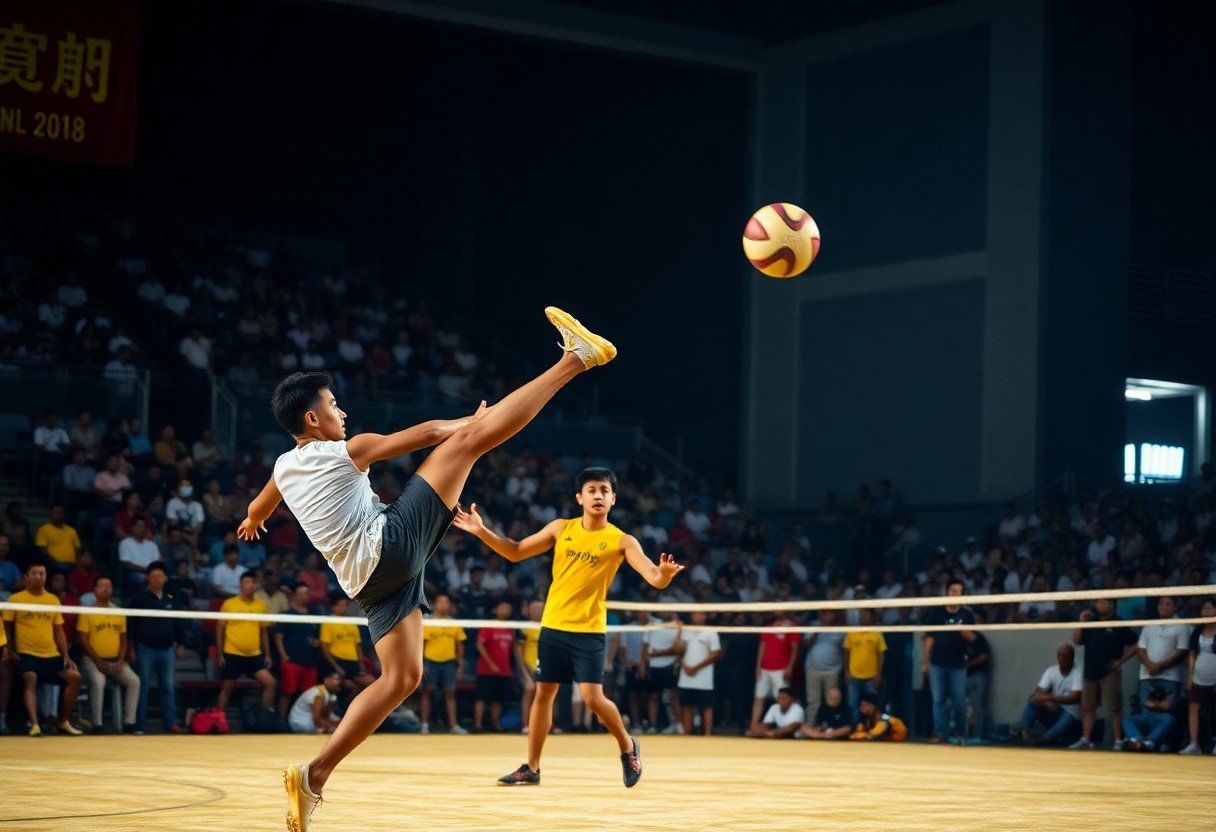
The Skills Required in Sepak Takraw
Now, let’s probe into the unique skills that make Sepak Takraw an exceptional sport worthy of Olympic attention.
Athleticism and Physical Demands
Among the sports worldwide, Sepak Takraw stands out for its athleticism and physical demands. Players exhibit remarkable agility, strength, and endurance as they leap, kick, and maneuver around the court, often executing complex plays with precision.
Skills and Techniques of Players
Beside the physicality, the skills and techniques required in Sepak Takraw are indispensable. Players must master various elements such as serving, receiving, and executing advanced kicks, all while maintaining balance and coordination.
A proficient Sepak Takraw player employs a variety of coordinated movements, demonstrating techniques like the *spike*, *serve*, and *block* that can decisively alter the flow of the game. It’s not just about brute strength; successful players leverage their *timing* and *split-second decision-making skills* to outmaneuver opponents, showcasing their hard-earned expertise on the court.
Strategic Elements of Gameplay
Against the backdrop of dazzling athleticism, strategic elements play a vital role in Sepak Takraw. Teams develop intricate game plans to outsmart their opponents using teamwork and tactics tailored to their rivals’ strengths and weaknesses.
Another crucial facet of gameplay is the art of *anticipation* and *positioning*. Effective players analyze opponents’ movements and adapt their strategies accordingly, constantly shifting the dynamics on the court. By combining *physical prowess* with astute tactical planning, Sepak Takraw not only entertains but elevates competition to a realm where both skill and strategy harmoniously converge.
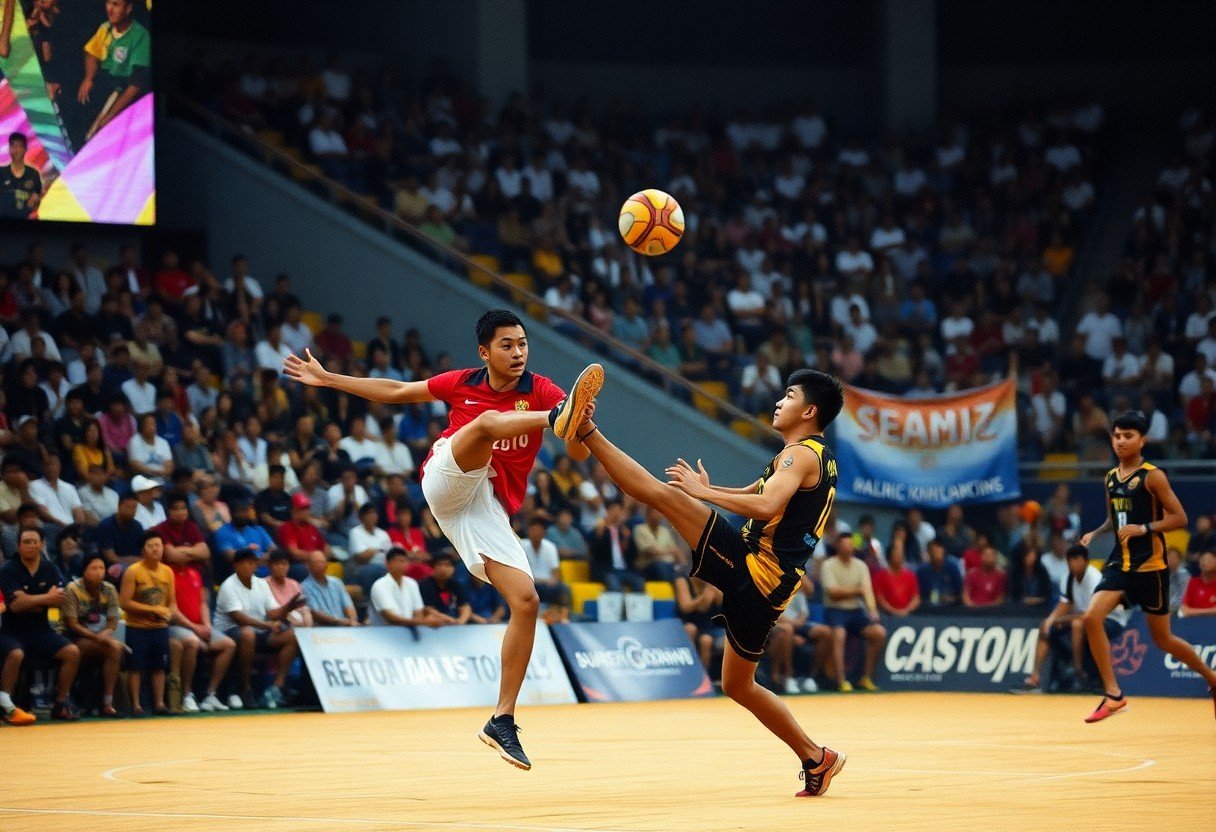
Global Reach and Popularity
Many sports have their roots in specific regions, but Sepak Takraw has transcended borders, captivating audiences from diverse backgrounds. This unique sport combines elements of traditional games and martial arts, resulting in a dynamic experience that attracts fans all over the world.
Regions Where Sepak Takraw is Most Popular
At the core of Sepak Takraw’s vibrant community are countries like Malaysia, Thailand, and Indonesia, where the game is played not only casually but also at a competitive level. Other nations, including Vietnam and the Philippines, have embraced the sport, making it an integral part of their cultural landscape.
Official Championships and Tournaments
Before you investigate deeper into Sepak Takraw, it’s worth noting that this sport features numerous official championships and tournaments, showcasing talent on both regional and international stages. The ASEAN Games and the Sepak Takraw World Championship are just a few examples of events where top players demonstrate their skills and dedication.
This global interest is evidenced by the increasing number of participants and fans, emphasizing that Sepak Takraw is more than just a niche sport. Major events attract audiences who appreciate the combination of skill, agility, and teamwork inherent in the game, further solidifying its place in the international sporting arena.
The Role of National Teams
Across the globe, national teams are instrumental in promoting Sepak Takraw and rallying broad support for the sport. By showcasing the best players, these teams not only inspire aspiring athletes but also cultivate a sense of national pride.
Also, national teams often pave the way for international exposure and recognition of Sepak Takraw. They participate in prestigious tournaments and showcase their talents, fostering a competitive spirit that ignites interest in the sport. As a result, the growth of Sepak Takraw on a global scale is fueled by the commitment of these talented athletes and their respective countries.
Sepak Takraw in the Context of the Olympics
After examining the world of sports, it becomes evident that Sepak Takraw deserves recognition on a grander stage, like the Olympics. This unique sport combines athleticism with cultural heritage, presenting a captivating spectacle for fans around the globe.
Examination of Other Racquet Sports in the Olympics
Alongside traditional sports like badminton, which showcases incredible agility and athletic prowess, the Olympic roster includes racquet events that captivate audiences with their dynamic gameplay and intensity, highlighting the importance of diverse athletic disciplines.
Historical Attempts for Olympic Inclusion
About the journey of Sepak Takraw, countless efforts have been made to elevate this sport to Olympic status since the late 20th century. With proposals submitted to the International Olympic Committee, the sport has gained attention but has yet to break into the prestigious arena.
But these attempts are not without their challenges. The enthusiasm surrounding Sepak Takraw, combined with the growing interest in Asian sports, highlights a potential pathway to Olympic inclusion, yet a structured approach and strategic partnerships will be necessary to turn this vision into reality.
Potential Challenges and Barriers
Across the globe, Sepak Takraw faces obstacles related to visibility and recognition, often overshadowed by more established sports. Limited international exposure and inconsistent governance can hinder progress for those wishing to see it on the Olympic stage.
Potential support from sponsor partnerships and strengthened national federations could pave the way for enhanced visibility and resources that are vital to promoting Sepak Takraw. Engaging the public through outreach and education about the sport can also elevate its status, ensuring it earns the recognition it truly deserves in the sporting community.
Arguments for Olympic Inclusion
To truly appreciate the significance of Sepak Takraw, you need to consider its potential for Olympic inclusion. This sport not only showcases extraordinary athleticism but also embodies cultural heritage and unity. You can see more about Why Sepak Takraw Should Be an Olympic Sport, which highlights these elements beautifully.
Promoting Diversity and Inclusion in Sports
With its roots in Southeast Asia, Sepak Takraw promotes diversity by introducing a lesser-known but fascinating sport to a global audience. Including it in the Olympics would allow nations to share their unique cultures while fostering a spirit of inclusion among all participants.
The Unique Appeal of Sepak Takraw
Above all, Sepak Takraw is a dynamic sport that combines agility, skill, and acrobatic flair, setting it apart from conventional games. The mesmerizing plays and intricate strategies keep both players and spectators captivated, making it a worthy contender for the Olympic stage.
Understanding the unique appeal of Sepak Takraw requires you to witness the sport in action. The breathtaking performances, featuring high-flying kicks and intricate footwork, demonstrate athletes’ incredible coordination and balance. Its fast-paced nature and effortless style make it not just a sport but a theatrical display, rich with cultural significance, demanding recognition on an international level.
Broader Benefits for the Sport and Global Community
Sports have the power to connect people, and including Sepak Takraw in the Olympics would enrich the global sports community. You will find that it nurtures cross-cultural exchange and encourages an appreciation for diverse athletic disciplines.
This inclusion would provide a platform for Sepak Takraw that can lead to increased participation in the sport, especially among youth. With more visibility, you’ll see greater access to resources, training programs, and competitions globally. This can elevate the sport’s status and inspire future generations, creating a vibrant community around a beautiful game while enhancing international camaraderie.
To Wrap Up
Now that you’ve explored the unique aspects of Sepak Takraw, it’s clear that this mesmerizing sport deserves its place on the Olympic stage. With its blend of athleticism, strategy, and cultural importance, you can appreciate how it showcases the diversity of global sports. By advocating for its inclusion, you not only support a thrilling competition but also celebrate the rich traditions it represents. Engaging with Sepak Takraw at the Olympics would enrich the Games and offer you an exciting experience that transcends borders.
FAQ
Q: What is Sepak Takraw and why is it unique?
A: Sepak Takraw is a traditional sport native to Southeast Asia that combines elements of soccer, volleyball, and gymnastics. It is played with a rattan ball and requires immense agility, coordination, and teamwork. The game is played by two teams of either one or three players who use their feet, knees, chest, and head to pass the ball over a net. What makes it unique is its rich cultural heritage and the remarkable athletic skills displayed by the players, making it a visually captivating sport.
Q: How does Sepak Takraw promote sportsmanship and teamwork?
A: Sepak Takraw inherently fosters a sense of camaraderie and teamwork, as players must work closely together to execute plays and strategies successfully. Each point scored requires coordination and understanding among team members. This sport encourages players to trust one another and develop strong relationships, thereby instilling values of sportsmanship and mutual respect, which are imperative in competitive sports.
Q: What are the benefits of including Sepak Takraw in the Olympics?
A: Including Sepak Takraw in the Olympics would provide numerous benefits. First, it would promote diversity in Olympic sports, showcasing different cultures and traditions. Second, it would attract a broad audience, particularly from Southeast Asia, where the sport is immensely popular. Additionally, it would inspire younger generations to engage in physical activities, fostering a global appreciation for this dynamic and entertaining sport.
Q: How would Sepak Takraw enhance the Olympic experience for spectators?
A: Sepak Takraw offers a thrilling and fast-paced viewing experience with its high-flying kicks and acrobatic plays. The combination of athleticism and artistry keeps spectators on the edge of their seats, making it a captivating event. Including Sepak Takraw would not only diversify the range of competitions but also attract fans from different backgrounds, promoting cultural exchange and unity through sport during the Olympic Games.
Q: What challenges does Sepak Takraw face in becoming an Olympic sport?
A: Despite its appeal, Sepak Takraw faces challenges such as limited global recognition outside Southeast Asia and the need for increased international competition structures. Advocacy and promotion efforts are imperative for raising awareness about the sport. Additionally, gaining support from national and international sports organizations would be vital to demonstrate the sport’s potential in a global context and ensure its integration into the Olympic framework.


